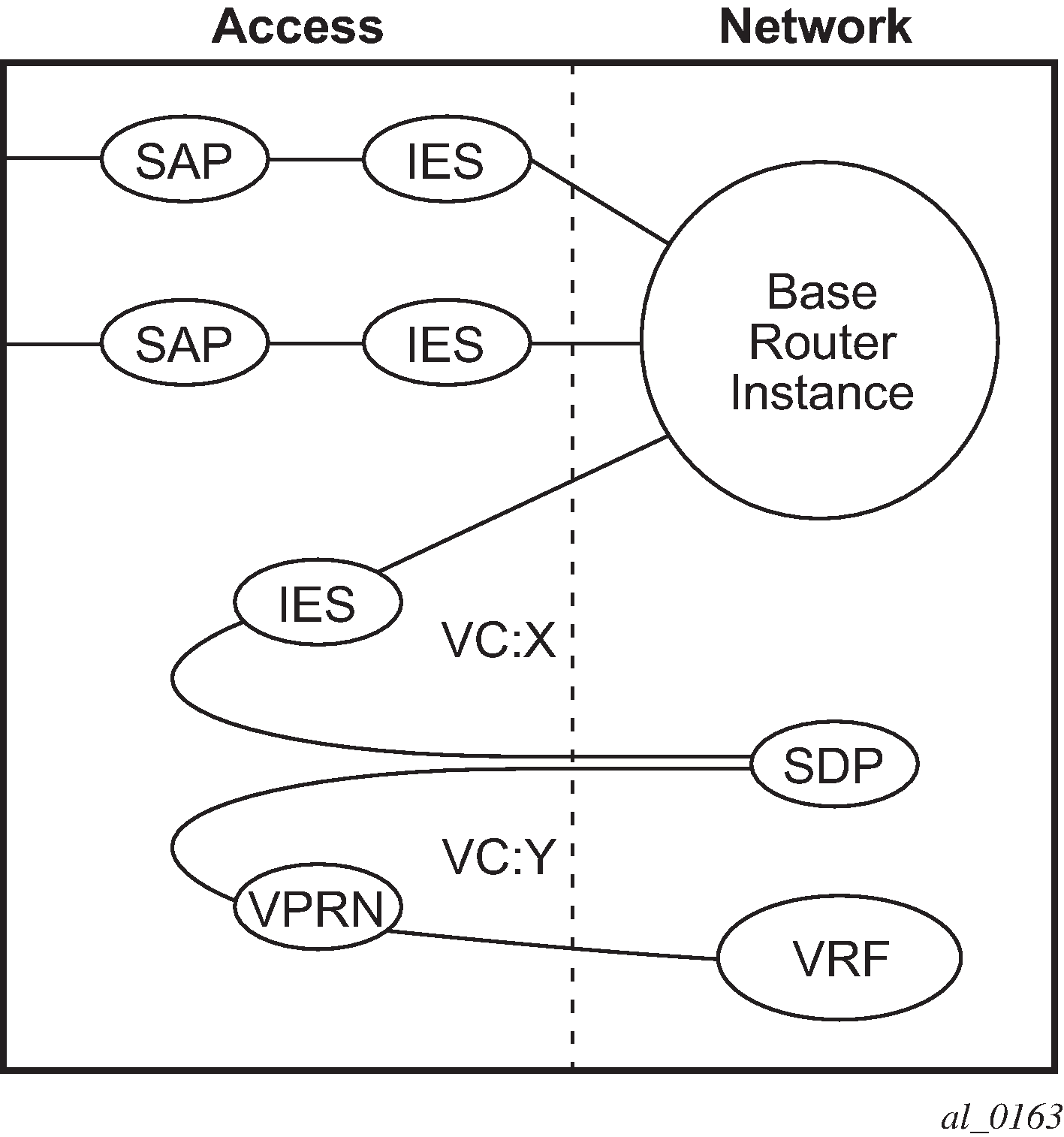Distributed services use service distribution points (SDPs) to direct traffic to another router through service tunnels. SDPs are created on each participating router and then bound to a specific service. SDP can be created as either GRE or MPLS. See the 7450 ESS, 7750 SR, 7950 XRS, and VSR Services Overview Guide for information about configuring SDPs.
This feature provides the ability to cross-connect traffic entering on a spoke SDP, used for Layer 2 services (VLLs or VPLS), on to an IES or VPRN service. From a logical point of view, the spoke SDP entering on a network port is cross-connected to the Layer 3 service as if it entered by a service SAP. The main exception to this is traffic entering the Layer 3 service by a spoke SDP is handled with network QoS policies and not access QoS policies.
This feature applies to the 7450 ESS and 7750 SR only.
Figure: SDP-ID and VC label service identifiers depicts traffic terminating on a specific IES or VPRN service that is identified by the SDP-ID and VC label present in the service packet.


Figure: IES spoke-SDP termination depicts a spoke-SDP terminating directly into a Layer 3 service interface (IES or VPRN) at one end, and a Layer 2 service (Epipe, Ipipe, or VPLS) at the other. There is no special configuration required on the Layer 2 service.
If the terminating Layer 2 service is an Ipipe, then on the IES/VPRN interface end, the spoke-SDP must be created with the vc-type Ipipe option. Spoke-SDPs created with vc-type ether (the default) are compatible with Epipe and VPLS services, as well as with other IES/VPRN interfaces.
If the MPLS network uses LDP signaling, then in order for a spoke-SDP to function, the LDP binding MTUs at each end must match. For a Layer 2 service, the MTU of the local binding is 14 octets less than the configured service-mtu (such as, binding MTU = service-mtu - 14). For an IES or VPRN interface, the binding MTU is equal to either the configured ip-mtu of the interface, or the SDP’s path-mtu minus 14, whichever is lower. The local and remote MTUs of all bindings can be found using the CLI command show router ldp bindings.
All routing protocols that are supported by IES/VPRN are supported for spoke-SDP termination.
See VCCV BFD support for VLL, Spoke SDP Termination on IES and VPRN, and VPLS Services in the 7450 ESS, 7750 SR, 7950 XRS, and VSR Layer 2 Services and EVPN Guide: VLL, VPLS, PBB, and EVPN for information about using VCCV BFD in spoke-SDP termination.